-
About
- About Listly
- Community & Support
- Howto
- Chrome Extension
- Bookmarklet
- WordPress Plugin
- Listly Premium
- Privacy
- Terms
- DMCA Copyright
- © 2010-2025 Boomy Labs


 Hi-Tech iSolutions LLP
Hi-Tech iSolutions LLP
Listly by Hi-Tech iSolutions LLP
Hi-Tech offers CAE analysis & consulting by CFD analysis services & FEA modeling services for automotive, process, building/construction & heavy engineering industry.

Hiring the consultant is a secondary concern; what is even more important is to realize who should actually consider hiring a CFD consultant. This guide lays out some important points for organizations looking to adopt simulation driven design approach in their product development cycle, but is skeptical about choosing the right partner.

Finite Element Analysis (FEA) is an essential aspect of product design in most industry sectors. In spite FEA being so important manufacturers don’t focus on it much or sometimes ignore it. And ultimately end up with inefficient product design and later tend to pay more for FEA analysis and product design optimization. Have a look at top ten mistakes that makes you pay more for FEA.

The use of linear analysis is limited for materials that do not undergo large deformations and retain their original shape and size, once the loads are removed. However, in practicality, every material available in nature possesses some sort of non-linear behavior. As such, it is very much obvious to choose non-linear analysis to ensure accuracy in results.

The continuously growing demands from the developing regions of the globe and a pressing need to develop economical automobiles are keeping manufacturers busy in seeking a profitable position in the market.
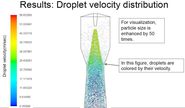
Most often, computational fluid dynamics (CFD) is seen as a replacement tool against experimental investigations. Engineers try to calibrate the results obtained through CFD to match exactly with the real world conditions; however, the reality is that CFD results always differ.

Industries that manufacture high-voltage cables are required to consider important design parameters when designing power transmission systems. One key aspect is the ability to deliver specified quantity of current without exceeding permissible temperatures.

Finite element analysis has made lives of mechanical engineers and design engineers a lot easier. Through simulation techniques, evaluating product designs have become faster, allowing manufacturers to reach their product development goals on time and place their products in the market effectively.

Products are getting smarter every day, and are becoming more personalized and largely different from conventional designs. The modern engineering community as such has to rely on new set of design and development tools against the conventional ones.

The development of offshore structures has been phenomenal over the last few decades. The key driver for such development is primarily due to the constant urge to explore deep waters due to the ever-increasing oil demands. The continuous rise in the need of deep water developments and exploitation of shallow water reserves has invoked a new range of offshore structures.
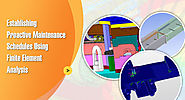
Any engineered product’s success rate hugely depends on the amount of useful life it delivers. As conventional designs continue evolving for the sake of improving performance, it has become mandatory for design engineers to adopt new ways to determine and increase product life, while downsizing and reducing the development cost.

Early product failures turn very much costly for manufacturers, resulting in a substantial loss in revenue, value and customer’s trust towards the brand. It is however very much common for many products to fail prematurely, since engineers are consistently forced to improve the performance, reduce cost and improve the time to market. In a pursuit to achieve these requirements, the product quality get affected somewhere.
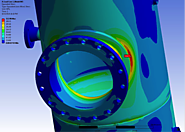
Pressure vessels are part of common equipment utilized in plants to store liquids and gases under high pressure. It is certain that pressurized fluids will develop stresses in the vessel, which when exceeds failure limits, will lead to hazardous incidents and fatalities.
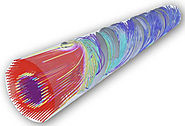
The potential of CFD simulations is increasingly being exploited in many modern engineering fields. However, the use of CFD techniques is more restricted to manufacturing domains, to study and optimize the performance of equipments and systems involving fluid flows. Yet, recent advancements in scanning and computing technologies have opened a whole new set of opportunities in biomedical engineering field.

Let's discuss about exhaust gas streams emitting from industrial process plants consist of harmful pollutants, which are carried away for sufficiently large.

The results of finite element analysis hugely depend on the type of element used to convert the geometry into smaller elements. While in most 3D simulations, solid elements are required, it is found that these elements do not give desired results for thin and slender structures.

Computer aided engineering has revolutionized product design process and has provided manufacturers the benefits of cost saving and bring products to the market faster. It is hard to imagine a product development process today that does not undergo a simulation test.

As a product designer, engineer or a manufacturer, we know the importance of validating the idea of product design prior to plan a full-fledged production. Validation and verification is a green signal for the design that is ready to be mass produced with all the quality checks done to ensure its safety and reliability.
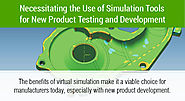
New product in the market is often most crucial for manufacturers, especially in a cut-throat competitive scenario. According to a recent research study from Aberdeen Group, almost 37% of total revenues are generated from new products, making it extremely important to launch the products on time with the required quality to gain maximum profitability and acceptance rate from the customers.
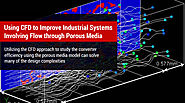
Many industrial applications involve fluid flow through porous media that directly affects their performance. Filters, packed beds and perforated plates are some of the examples of porous media through which fluid flow occurs. While different phenomena and multiple fluid phases exist, it is extremely complex to determine the efficiency of the media through physical experimentation.

From simple household uses to high-end industrial applications, pumps remain a preliminary device make our lives easier. It’s nearly impossible develop many equipments and devices that rely on pressurized fluid streams without utilizing pumping systems. Because of its highly important role, it is evident to place a firm focus on its design for a particular application.

Finite element analysis has always been used as a third dimension in product testing apart from experimental and analytical tests. The reason why FEA alone is not employed as a standard testing tool is primarily because it is an approximation of the partial differential equations and often consists of residuals that always keep the results from being 100% accurate.

The mixing of two or more fluids is a process most commonly found in many industries, having a substantial importance in almost every production process as well as industrial and consumer products. Examples include mixing of dye into liquid, or food ingredients mixed together in food processing or mixing of gases diffusing into one another. The number of opportunities for mixing technology is unlimited, which is a reason why this technology is considered as a large area for research.

There's always a debate on choosing the right meshing technique for FEA and CFD simulations. Since meshing is an important part in any simulation process, it is imperative to ensure that a proper meshing technique is adopted. This is essentially a concern for most analysts as the simulation results hugely rely on mesh quality.
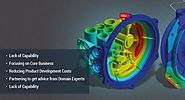
Computational Fluid Dynamics (CFD) has become more of a mainstream design testing tool for most manufacturing organizations. The possibility to quickly assess the design prior to actual prototype reduces much of the design time, making it highly advantageous for organizations eyeing for faster product development. It is very much possible to find a team of CFD analysts in many organizations, playing with the fluid flow parameters to evaluate the product designs.

A usual approach to provide cooling is by means of natural or forced convection using fans and coolants for air and liquid cooling respectively. However, as market requirements continuously shift towards miniaturization of these devices, thermal management of electronic components is a challenging task.
